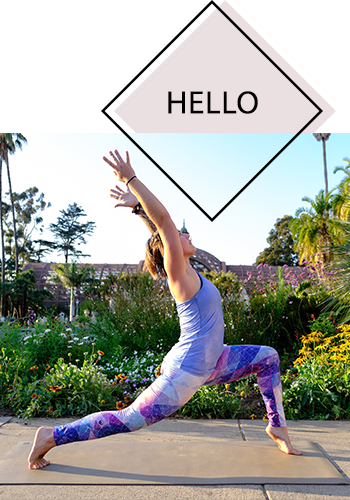The Yoga Poses You've Never Done Before
/As I've practiced yoga over the last eight years, there have been many yoga postures that are just out of reach.
Hanumanasana (splits pose), Urdva Dhanurasana (wheel pose), Adho Mukha Vrksasana (handstand) are three such poses that come in and out of my practice (and there are many others!).
Some days I feel accomplished with advanced poses and I'm able to hold them for up to ten breaths; on other days, I laughingly move on to different postures after trying several times and failing.
It can take months— or even years— to master advanced poses.
Strength, flexibility, and balance are developed over time.
So, how do we accept this? How do we deal with moments of impatience or frustration when we are working hard to master a pose, but can't seem to get it down?
And, as a beginner, how do you continue practicing without becoming intimidated by these difficult postures?
If you find yourself chasing after a pose, consider:
How attached am I to the outcome?
Often in my practice, it is only after I let go of the attachment that I discover my body is ready for the pose.
For as much as I love to pretend sometimes that the physical, mental and spiritual elements aren't interconnected (and I want to say, I can't do this because of my physical limitations), there have been so many times when it isn't just about my literal body.
I find this especially true with backbends. It is much harder to do deep backbends when I am closed off emotionally.
Have you ever noticed how different areas of your body are connected to your energy? How by releasing stagnant emotions, you can deepen a pose?
Another thing I like to do is visualize the pose. Try to visualize yourself in the pose, right now.
Enter the pose in your mind's eye. Witness the other yogis around you as they do this pose. Feel into the energy of the pose. (This is especially helpful with arm balances and inversions.)
Visualization can be a critical step in the process, and sometimes as satisfying as actually doing the posture.
Remember, too: every day in your practice is different. Just because you couldn't do the pose yesterday doesn't mean you shouldn't try again today.
On the flip side of that, it is also important to take rest days so that your body can recover from the muscular and fascial energy that you expend. Sometimes you have to consciously walk away from a pose for a little while and come back to it again later. You must let go and release your attachment in order to move forward.
I've had the experience several times recently where I don't do any handstands for two or three days, and when I come back to my mat and try them again, I'm stunned at how I suddenly feel stronger and more able to float up!
What is the pose within this pose? As you practice, you'll start to notice repetition of shapes in the body. Each advanced posture holds within it a more basic pose.
A crescent lunge twist is setting you up for side crow. And side crow is preparing you for Grasshopper pose.
Handstand contains staff pose.
Chaturanga can be a key that unlocks the door to many other poses, and you start by mastering Plank before you can hold Chaturanga.
See what I mean? ;)
A tip for beginners: meet with your teachers. Be willing to ask questions and ask for help. And be honest about what you want. If you say, 'I want to nail crow pose in two months,' chances are, your teacher can help you get there, and he or she would be so proud to watch your progress!
Also, do you own research on alignment and body mechanics. Embrace your inner yoga nerd! I absolutely love doing this, and can credit my own self-education to a lot of my progress. I recommend starting with these:
- The Asana Academy with Brian Aganad. His podcast is incredible.
- Yoga Sequencing by Mark Stephens. The sequencing for how to warm up the body = amazing.
- The FlyStrong app by Dylan Werner on Cody app. I'm still working through this and it's giving me a ton of practical knowledge for how to get into handstand.
When you really stop and think about it, these tools and approaches are relevant to all levels, beginner to advanced! We are all always beginners.
Finally, and this may sound obvious: set your goals. Write down what you're working on. Get really clear about what you want, and you will achieve it!
I'm curious: what other strategies have helped you achieve new poses? Yoga teachers, what do you share with students to help them advance their practice?
Wishing you patience and persistence, friends!
Photos by Sequoia Cipes of Echoed Moments Photography. Wearing Inner Fire yoga apparel.























